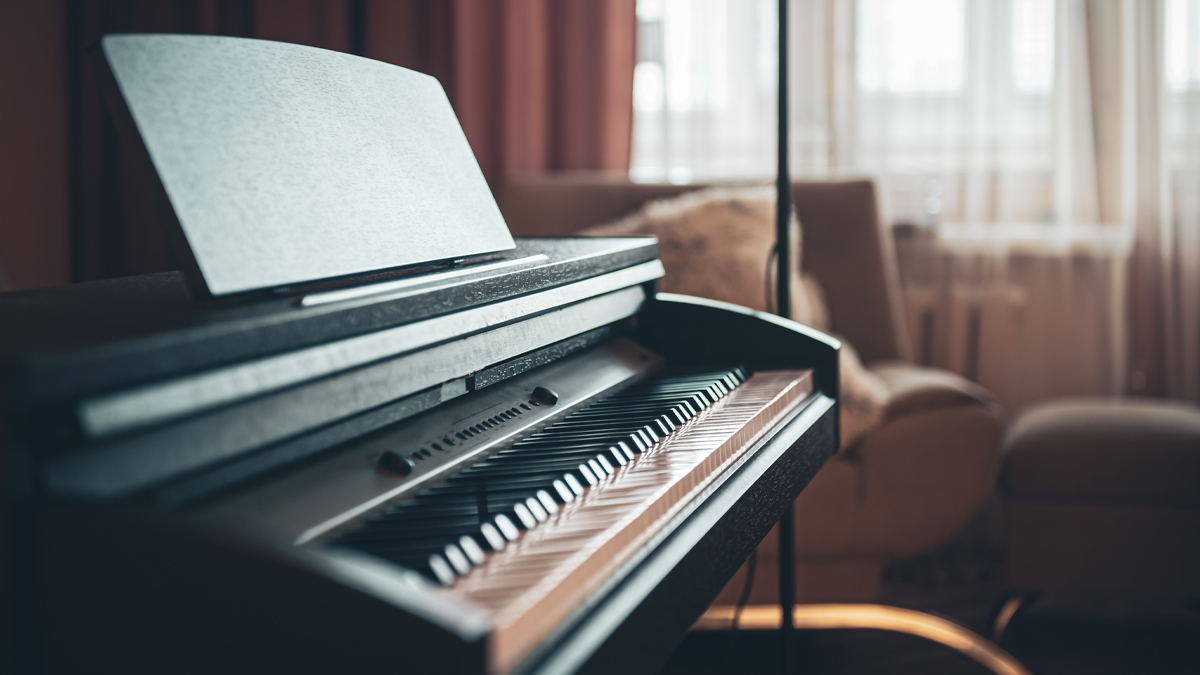The intricate interplay of mechanics and acoustics in a piano reveals a captivating fusion of art and science. This article explores the Physics and Engineering Behind Piano by examining the factors that contribute to its iconic sound and performance in the musical instruments industry. We delve into the dynamic behavior of strings, hammers, soundboard, and body structure, while also considering the mechanisms behind action, damping, and tuning. Each section highlights a key aspect, emphasizing how scientific principles and advanced design techniques coalesce in crafting a masterpiece.
| Table of Contents | |
|---|---|
| I. | String Vibration and Modal Analysis |
| II. | Hammer-String Impact Dynamics |
| III. | Acoustic Impedance Matching via the Soundboard |
| IV. | Resonance and Vibrational Coupling in the Piano Body |
| V. | Bridge and Structural Energy Transfer Efficiency |
| VI. | Action Mechanism Engineering: Levers, Escapement, and Repetition |
| VII. | Damping and Sustaining Control via Pedals |
| VIII. | Material Science: Selection and Behavior Under Stress |
| IX. | Inharmonicity and its Compensation in Tuning |
| X. | Finite Element Modeling and Computational Analysis |
| XI. | Integration of Electromechanical Systems in Hybrid Pianos |
String Vibration and Modal Analysis
A piano’s sound originates from string vibrations governed by modal analysis. In-depth understanding of harmonic series and standing waves reveals the Physics Behind Piano as multiple vibration modes interact to produce rich, complex tones. Variations in string tension, length, and mass contribute to distinct frequencies that define musical quality. Engineers apply modal analysis to design strings that balance sustain and clarity, optimizing performance across diverse musical contexts. This scientific insight is fundamental to maintaining the instrument’s tonal integrity in the competitive musical instruments industry.
Hammer-String Impact Dynamics
The interaction between the hammer and strings is critical to sound production. Upon striking, the hammers impart energy that excites various vibrational modes in the strings. This impact dynamic, influenced by the material composition and geometry of both hammers and strings, determines the timbre and attack of each note. Precision in hammer design ensures responsiveness and minimizes unwanted overtones, securing a natural, expressive performance. By fine-tuning these dynamics, manufacturers can enhance playability and sustain, meeting the high standards expected in the piano segment of the musical instruments industry.
Acoustic Impedance Matching via the Soundboard
The soundboard acts as a bridge between string vibrations and audible sound. Its design focuses on acoustic impedance matching to ensure efficient energy transfer from the strings, amplifying their vibrations. The careful selection of wood and meticulous craftsmanship result in a soundboard that contributes to the instrument’s warmth and volume. This aspect of the piano’s design is essential in controlling tonal balance and is optimized through empirical testing and adjustments. Such precision ensures that the final sound production remains both rich and dynamically controlled in various performance settings.
Resonance and Vibrational Coupling in the Piano Body
The piano body is more than just a structural support; it is integral to the instrument’s acoustic character. Resonance and vibrational coupling within the body enhance sound amplification and color. Strategic design of the cabinetry, ribs, and braces promotes favorable resonant frequencies while dampening unwanted vibrations. This finely tuned interplay results in a balanced tonal output that complements the string’s natural resonance. Maintaining this synergy between components ensures that the piano performs reliably and expresses the intended musical nuances in both studio and concert environments.
Bridge and Structural Energy Transfer Efficiency
The bridge plays a pivotal role in transferring vibrational energy from the strings to the soundboard, influencing both dynamic range and tonal quality. Its design is critical for maximizing energy transfer efficiency, directly impacting sound clarity. The incorporation of precision engineering standards, often highlighted as a key example of Engineering Behind Piano, allows manufacturers to optimize the resonance while minimizing energy losses. A well-designed bridge ensures consistent tonal performance and enhances the overall musical expressiveness of the instrument, making it a cornerstone of piano craftsmanship.
Action Mechanism Engineering: Levers, Escapement, and Repetition
Piano actions are marvels of mechanical design, featuring a complex assembly of levers, escapements, and repetition mechanisms that translate a pianist’s touch into sound. This intricate engineering setup aptly described as a prime example of Engineering Behind Piano, ensures rapid response and precise control, allowing for nuanced play. By balancing weight, speed, and mechanical feedback, the system offers both expressivity and consistency. The robust design supports repeated, rapid keystrokes without sacrificing tonal quality, proving essential for demanding performance scenarios and advancing the overall reliability of pianos in the musical instruments industry.
Damping and Sustaining Control via Pedals
Pedals in a piano regulate note sustain and decay, shaping the instrument’s overall dynamic profile. The damping mechanism controls the duration of vibrations by isolating or coupling the strings with the soundboard. This allows for subtle manipulation of the sound’s texture and sustain, giving musicians a broad expressive range. By finely tuning the damping properties, designers optimize the instrument for diverse musical styles and performance venues. Such precision ensures that the piano can adapt to both brief staccatos and long, lingering resonances, which are integral to achieving professional-level musicality.
Material Science: Selection and Behavior Under Stress
The performance and durability of a piano heavily depend on the chosen materials. Advanced material science informs the selection of woods, metals, and composites to withstand repeated stresses while preserving acoustic properties. Rigorous testing and research ensure that each component behaves predictably under pressure and maintains its structural integrity. This careful material curation guarantees a consistent sound quality and reliability over time, contributing to the piano’s esteemed reputation in the musical instruments industry. Optimal material performance is vital for both aesthetics and long-term durability.
Inharmonicity and its Compensation in Tuning
Real-world strings do not vibrate in perfect harmonic series, leading to inharmonicity a deviation from ideal pitch relations. This phenomenon challenges traditional tuning, requiring compensatory measures to align with musical expectations. Incorporating advanced mathematical models, technicians adjust tuning parameters to mitigate inharmonicity, ensuring tonal balance. The Physics Behind Piano is evident as these adjustments accommodate slight variances in string stiffness and length. By understanding and controlling this inherent imperfection, makers achieve a harmoniously rich and accurate sound, underscoring the continuous refinement in the art and science of piano tuning.
Finite Element Modeling and Computational Analysis
Modern piano design increasingly leverages finite element modeling to simulate and optimize vibrational behavior. Computational analysis aids in predicting stress distributions and vibrational modes in various components, from the soundboard to the complex action mechanism. This analytical approach allows engineers to experiment with design modifications virtually before physical production, saving time and resources. The integration of these computational tools ensures that theoretical predictions align with practical performance, enhancing both quality and reliability. Such applications of advanced technology are reshaping how precision and innovation are implemented in piano design.
Integration of Electromechanical Systems in Hybrid Pianos
Hybrid pianos blend traditional craftsmanship with modern technology. The integration of electromechanical systems expands creative possibilities by combining acoustic sound production with digital enhancements. These systems facilitate features like MIDI connectivity, adjustable sound profiles, and seamless recording capabilities while preserving the tactile responsiveness of an acoustic piano. Innovations in sensors and digital signal processing ensure that the electromechanical components complement the classic design rather than detract from it. This confluence of tradition and innovation represents the future trajectory of pianos in the musical instruments industry, appealing to both purists and modern musicians alike.

